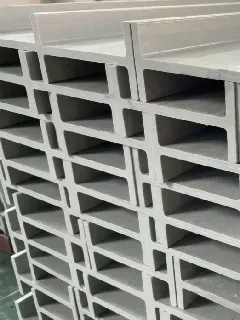loading...
- No. 9, Xingyuan South Street, Dongwaihuan Road, Zaoqiang County, Hengshui, Hebei, China
- admin@zjcomposites.com
- +86 15097380338
- Welcome to visit our website!
Exploring the Applications and Innovations of Marine Gratings in Oceanic Environments and Structures
Understanding Marine Grating Applications and Innovations
Marine grating, often referred to as fiberglass grating or composite grating, has emerged as a vital component in various maritime applications due to its unique properties and advantages. This innovative material is constructed from fiberglass, which is a combination of glass fibers and a polymer resin, providing an exceptional balance of strength, durability, and lightweight characteristics. In this article, we will delve into the various applications of marine grating and its growing significance in marine environments.
Key Properties of Marine Grating
One of the standout features of marine grating is its corrosion resistance. Traditional materials like steel and aluminum can undergo rapid degradation when exposed to the harsh marine environment, including saltwater, humidity, and UV radiation. In contrast, marine grating is engineered to withstand these conditions, making it an ideal choice for applications in shipbuilding, offshore platforms, and other marine structures.
Moreover, marine grating boasts a high strength-to-weight ratio. This means that it can support significant loads while remaining lightweight, facilitating easier installation and minimizing the strain on supporting structures. Additionally, the slip-resistant surface of marine grating enhances safety by providing secure footing, even in wet conditions. Its ease of customization allows for a range of designs, making it suitable for various applications.
Applications in the Marine Industry
Marine grating has proven itself in multiple applications within the marine industry. One significant area is in the construction of walkways and platforms on ships and offshore drilling rigs. These structures must be robust enough to endure heavy foot traffic while providing safety and stability. Marine grating meets these demands effectively, providing durability and ease of maintenance.
marine grating

In addition to walkways, marine grating is frequently utilized in the fabrication of scaffolding and storage racks
. Its lightweight nature simplifies transportation and assembly, enabling workers to set up safe working environments quickly. Furthermore, marine grating is also used for drainage grates in piers, docks, and other marine facilities, promoting effective water management while minimizing the risk of slips and falls.Environmental Considerations
As society increasingly focuses on sustainability, marine grating offers an environmentally friendly alternative to traditional materials. Its long lifespan reduces the need for frequent replacements, thereby lowering the overall material footprint. Additionally, many manufacturers of marine grating are making strides towards producing eco-friendly products by utilizing recycled materials in their formulations.
The ability of marine grating to provide superior ventilation and drainage also contributes to a decreased environmental impact. By facilitating water flow and air circulation, it helps avoid the accumulation of stagnant water, thus reducing the chances of algae growth and the need for chemical treatments.
Innovations in Marine Grating Technology
Recent advancements in technology have led to the development of even more sophisticated marine grating options. Innovations include the integration of anti-microbial properties, which prevent the growth of bacteria and fungi, making it particularly useful in healthcare environments aboard ships. Advances in manufacturing processes have also resulted in grating options that are even more lightweight yet robust, catering to the rising demand for efficient materials.
In summary, marine grating stands out as a crucial component in modern marine applications, owing to its durability, strength, and safety features. As industries continue to evolve and adapt to environmental challenges, marine grating will likely remain at the forefront of material innovation, blending functionality with sustainability in the maritime sector. Whether in shipbuilding, offshore structures, or coastal management, the role of marine grating is set to expand, highlighting the importance of this remarkable material in our increasingly complex marine environments.
-
GRP Structures: The Future of Lightweight, High-Performance EngineeringNewsJun.20,2025
-
FRP Water Tank: High-Performance Storage for Corrosive and Clean Water SystemsNewsJun.20,2025
-
FRP Square Tube: The New Industry Standard for Chemical and Structural ApplicationsNewsJun.20,2025
-
FRP Pultruded Profiles: The Ultimate Choice for Lightweight Structural StrengthNewsJun.20,2025
-
FRP Handrails: The Safer, Smarter, and Stronger Choice for Modern InfrastructureNewsJun.20,2025
-
FRP Grating: The Smart Solution for Durable, Lightweight Industrial FlooringNewsJun.20,2025
-
Why Choose a Galvanized Water Tank for Your Storage NeedsNewsMay.21,2025
